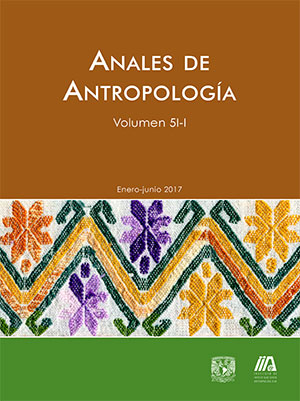Chemical residues from the pulque production. Etnoarchaeometry and experimental archaeology
Main Article Content
Abstract
Pulque was one of the most important beverages in the Central Plateau of Mesoamerica. Its consumption continued during the Colonial period and the beverage is still popular in some places, although its cultural survival is at risk in others.
In this paper we present the results of experimental and ethnoarchaeological studies aimed at recognizing the chemical residues produced by pulque production and consumption in the archaeological record.
Two kinds of investigations were carried out to identify the residues of pulque: first, experimental work producing “bricks” of lime mortar, simulating archaeological plastered floors that were gradually enriched with pulque during a month; second, an ethnoarchaeometrical study involved the analysis of the samples obtained from the floors of a residence in the state of Hidalgo where pulque is produced and sold.
The analyses were carried out with spot tests aimed at identifying the presence of carbohydrates, phosphates, fatty acids and protein residues in the samples. The results show that the enrichment of pulque can be recognized through high values of carbohydrates. We also show the results obtained through gas chromatography/mass spectrometry (GC/MS) analysis of one sample from the experimental brick of plaster.
Downloads
Article Details
Esta revista usa una licencia CC del tipo CC BY-NC-ND 3.0. Se maneja bajo el esquema de acceso abierto, con una licencia Creative Commons Attribution-NonCommercial-NoDerivs 3.0 Unported.
